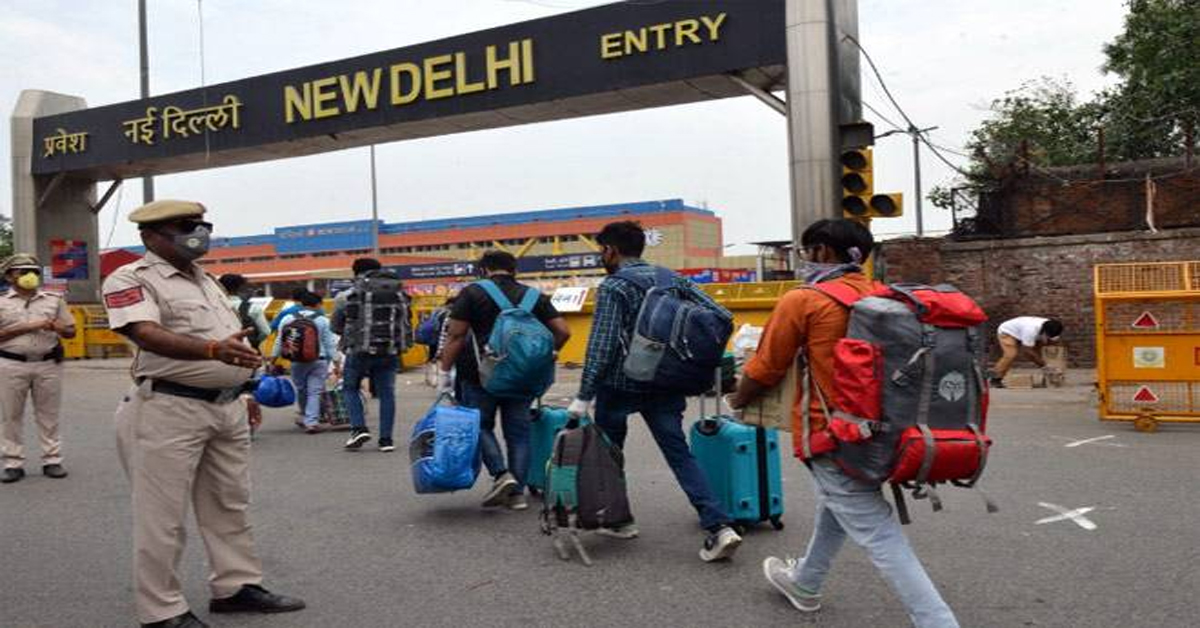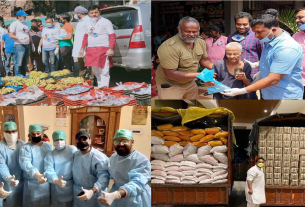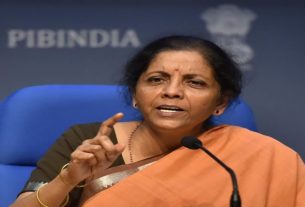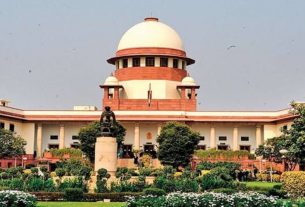New Delhi: India will enter into the fourth phase of lockdown from May 18 but with a different set of rules and guidelines as announced by Prime Minister Narendra Modi during his address to the nation on May 11. The new guidelines will be based on the suggestions made by chief ministers of all the states to the home ministry last week.
“Based on the suggestions by states, information related to lockdown 4 will be given to you before 18th May. We will fight corona and we will move forward,” the Prime Minister had said, adding that “we have to live with coronavirus for some time.”
The 54-day curfew in India, owing to the rising number of coronavirus cases, was first imposed for 21 days starting March 25 and then extended from April 15 and May 4.
According to the latest figures provided by the Health Ministry, the total number of coronavirus cases in India surpassed China’s tally with 85,940 infections and death toll soared to 2,752 on Saturday. China, which has a total of 84,649 cases, stopped adding new cases for the last two months now, while India has been detecting almost 4,000 cases every day for the last few days.
States for more relaxations in lockdown 4.0
As the Centre mulled easing some strict curbs in the fourth phase of the shutdown from Monday, state governments favoured more relaxations in lockdown restrictions for scaling up economic activities in non-containment coronavirus zones. However, some states including Punjab, West Bengal, Maharashtra, Assam and Telangana are in favour of extending the lockdown till the end of this month and have asked for powers to decide the zoning of districts — green, orange and red – as per the Covid-19 situation.
On Friday, while the Mizoram government announced it was extending the lockdown till May 31, Bihar, on the other hand, urged the Centre to continue the unprecedented measure till the month-end besides keeping rail and air traffic, other than the “Shramik Special’ trains for migrant labourers and evacuation flights, suspended during the period.
Lockdown 4.0 guidelines: Autos and taxis are also expected to be allowed in red zones with restrictions on the number of passengers.
No state wants complete lockdown withdrawal: MHA
Following suggestions from the states, an MHA official said that no state wants complete withdrawal of lockdown but all want gradual resumption of economic activities, according to PTI. The official said there will be lots of relaxations and flexibility in lockdown 4.0 with complete reopening of the green zones, very limited curbs in orange zones and strict restrictions only in the containment areas of red zones. The official also said states and UTs may be empowered to take decisions on easing of the curbs. However, the final guidelines will be issued by the MHA only after going through the suggestions of the state governments.
How rules will be different during lockdown 4.0
# Schools, colleges, malls and cinema halls will not be allowed to open anywhere in the country but salons, barber shops and optical shops may be allowed in red zones, barring Covid-19 containment areas.
# Gradual and need-based operations of the railways and domestic airlines are likely to be allowed from next week but the full-fledged opening of the two sectors is unlikely to take place immediately.
# Local trains, buses and metro services may start running with limited capacity in non-containment areas of red zones in the country.
# Autos and taxis are also expected to be allowed in red zones with restrictions on the number of passengers.
# Most of these services will be allowed within the districts in non-containment areas and state governments may be authorised to take a call on their reopening.
# Powers to open markets in orange and red zones may be given to state governments, which may follow the odd-even policy while allowing shops of non-essential goods to open.
#E-commerce platforms may be allowed to deliver non-essential items even in red zones, barring the containment areas. Sale of non-essential items by e-commerce companies have already allowed in green and orange zones.Coronavirus Explained
- Restarting domestic and international flights: Everything we know so far
- In less than 20 days, Covid-19 cases spiked by over three times
- How Covid-19 has affected the global economy
Here’s what is already allowed in Red Zones
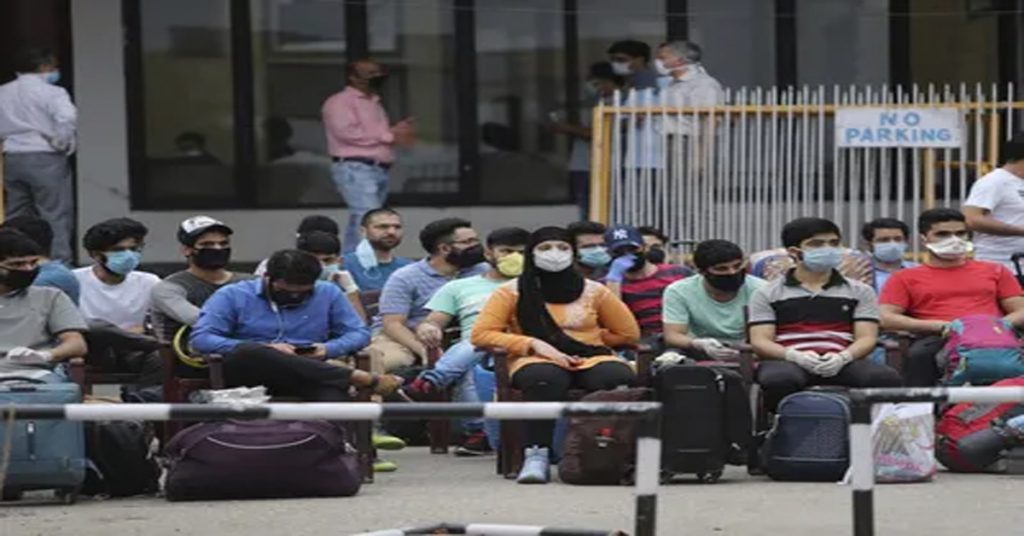
* Movement of individuals and vehicles is allowed only for permitted activities, with a maximum of 2 persons (besides the driver) in four-wheeler vehicles, and with no pillion rider in the case of two-wheelers
* Industrial establishments in urban areas – Special Economic Zones (SEZs), Export Oriented Units (EOUs), industrial estates and industrial townships with access control have been permitted
* Manufacturing units of essential goods, including drugs, pharmaceuticals, medical devices, their raw material and intermediates; production units, which require continuous process, and their supply chain; manufacturing of IT hardware; jute industry with staggered shifts and social distancing; and, manufacturing units of packaging material
* Construction activities in urban areas have been limited to in-situ construction (where workers are available on site and no workers are required to be brought in from outside) and construction of renewable energy projects.
* Shops in urban areas, for non-essential goods, are not allowed in malls, markets and market complexes.
* All industrial and construction activity in rural areas, including MNREGA works, food-processing units and brick-kilns
* In rural areas, without distinction of nature of goods, all shops except in shopping malls, are permitted
* All agricultural activities – sowing, harvesting, procurement and marketing operations in the agricultural supply chain are permitted.
* Animal husbandry activities are fully permitted including fisheries
* All plantation activities are allowed, including their processing and marketing.
* All health services (including AYUSH) are to remain functional, including transport of medical personnel and patients through air ambulances
* Financial sector to remain open largely. This includes banks, non-banking finance companies, insurance and capital market activities, and credit co-op societies
* Operation of homes for children, senior citizens, destitutes, women and widows, etc
* Operation of anganwadis
* Public utilities in power, water, sanitation, waste management, telecommunication and internet
* Courier and postal services
* E-Commerce activities, in the Red Zones, are permitted only in respect of essential goods
* Private offices can operate with upto 33% strength as per requirement, with the remaining persons working from home
* All standalone (single) shops, neighborhood (colony) shops and shops in residential complexes are permitted to remain open in urban areas, without any distinction of essential and non-essential.
* All Government offices shall function with senior officers of the level of Deputy Secretary and above at full strength, and the remaining staff attending upto 33% as per requirement. Defense and Security services, Health and Family Welfare, Police, Prisons, Home Guards, Civil Defence, Fire and Emergency Services, Disaster management and related services, National Informatics Centre (NIC), Customs, Food Corporation of India (FCI), National Cadet Corps (NCC), Nehru Yuvak Kendra (NYK) and Municipal services shall function without any restrictions; delivery of public services shall be ensured and necessary staff will be deployed for such purpose.
* Print and electronic media, IT and IT enabled services, data and call centres, cold storage and warehousing services, private security and facility management services, and services provided by self-employed persons, except for barbers etc.
* Manufacturing units of essential goods, including drugs, pharmaceuticals, medical devices, their raw material and intermediates; production units, which require continuous process, and their supply chain
* Jute industry with staggered shifts and social distancing; and manufacturing of IT hardware and manufacturing units of packaging material will continue to be permitted.
PM Modi first addressed the nation over India’s coronavirus preparedness on March 19, where he announced a “janta curfew” on March 22. On March 24, he announced a 21-day nationwide lockdown. On April 14, he extended the lockdown period till May 3. On April 3, in a video message, Modi asked the nation to light lamps for frontline corona warriors on April 5. The lockdown was further extended till May 17 by the Home Ministry.

